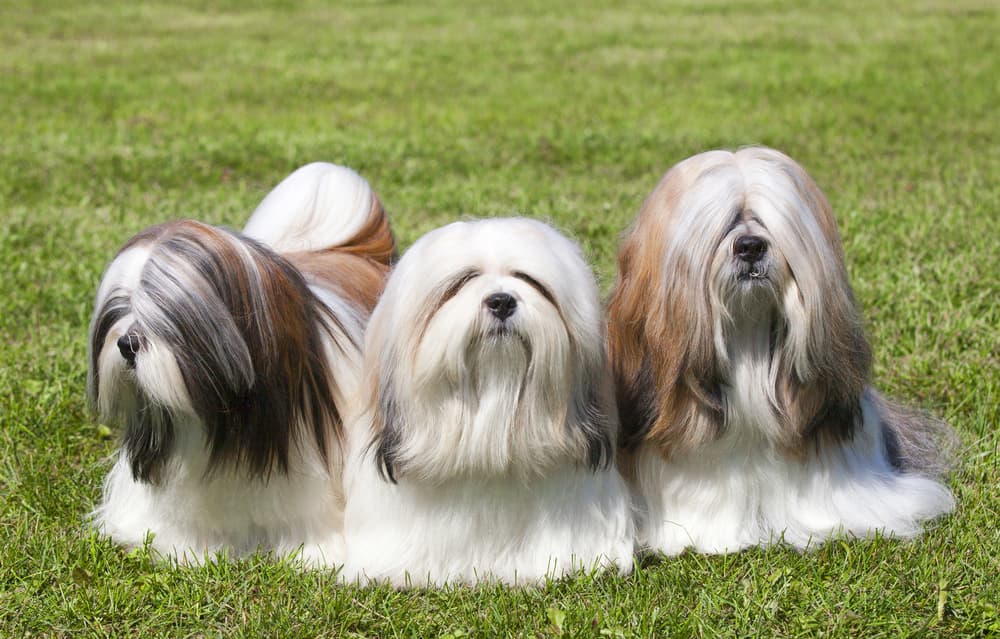The Lhasa Apso stands out with its long, luxurious coat (unless the dog’s owner chooses a trendy haircut). Its coat comes in various colors, such as gold, white, black, and a mix of these shades. Its dark, almond-shaped eyes, cute beards, and whiskers give it a wise and noble look—very fitting for a dog bred by Tibetan monks. Despite their small size, they are confident because they know their capabilities.
Lhasa Apsos are independent and sometimes stubborn while being playful and affectionate. They can also be wary of strangers at first, which makes them excellent watchdogs, but early socialization training can help. They thrive on human interaction and enjoy being part of family activities.




















